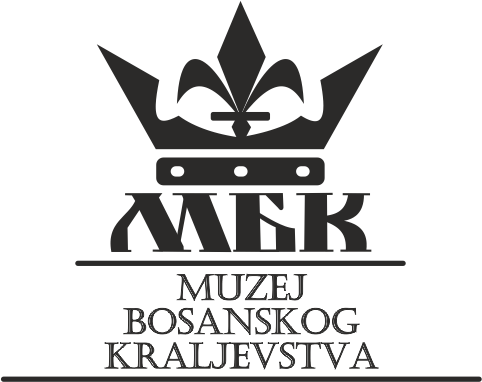Jelena was the daughter of the Bosnian nobleman and Croatian-Dalmatian ban Vuk Vukčić, brother of the famous Bosnian nobleman Hrvoje Vukčić. Jelena was Vuk’s older daughter from his first marriage to an unknown noblewoman. Besides Jelena, he had another daughter, Katarina, born through marriage to Banica Anka. Ban Vuk most likely died near the end of the 14th century (the last time he was mentioned as alive was on August 18, 1396) without leaving behind male heirs, so it seems that his brother Duke Hrvoje took care of his daughters Jelena and Katarina and the widow Anka. For Hrvoje Vukčić, finding adequate marriage partners for his proteges was of particular importance. Most likely in 1405 Jelena was married to Vuk Hranić Kosača, Sandalj Hranić’s brother. Duke Sandalj is known to have stayed with Duke Hrvoje in March 1405, most likely along with his brothers, Prince Vukac and Prince Vuk. Prince Vuk’s presence at these negotiations is explained by his planned marriage to Jelena. The marriage between Hrvatinić and Kosača families is a reflection of the rapprochement of Duke Hrvoje and Duke Sandalj that has been ongoing over the past few years, driven by political and economic interests. Undoubtedly, both marriages, and especially the first one, had far-reaching consequences for the further strengthening of the Kosača noble family on the Bosnian political scene, since there was a strong bond with the Hrvatinić family, who, led by Duke Hrvoje, were the most powerful feudal family of the medieval Bosnian state.
Little can be said with certainty about the marriage of Prince Vuk Hranić and Jelena. Prince Vuk acted in accordance with the policy of his elder brother Sandalj in his political performance. His possessions were in the areas of Jeleč, Bileća and Ljubinje. Of particular importance is the town of Jeleč, whose sub-town Podjeleč was a major economic center, so it is assumed that Jelena also stayed there. There is no evidence that this marriage resulted in offspring, although it is known that Prince Vuk Hranić had two sons, Ivan and Sladoje Vuković, but it is assumed that both were born out of wedlock. Prince Ivan Vuković appears in historical sources for the first time in 1419 as a witness to a charter, and for this role he had to be of legal age, which means that he was born before the marriage of Prince Vuk and Jelena. Later, Ivan Vuković caused big problems for his cousin and Sandalj’s successor Stjepan Vukčić.
It is also unknown how long this marriage lasted. If their marriage overcame the conflicts between Kosača and Hrvatinić families, it lasted the longest until 1424, when Prince Vuk died. It is reliably known that in Venice in 1421, Duke Sandalj Hranić’s deputies asked to take over the property of Jelena’s stepmother, the late Banica Anka, on her behalf. However, on that occasion it was not mentioned anywhere that Vuk and Jelena were still married.
Following the end of her marriage to Prince Vuk, Jelena retired to the monastery of St. Benedikt in Split, where she spent the last years of her life. On March 18, 1437, she drafted her will, which stands as the most significant testament to her life’s journey. For a long time, this extremely interesting document was incorrectly dated to 1337, and the identity of its author was also incorrectly determined. As a result of recent research, this puzzle has finally been solved, and now it can be stated without a shred of doubt that the testament was written in 1437 and is the expression of Jelena’s last will. A will is actually the act of a deeply religious person who, driven by a sense of guilt, leaves most of their property to finance religious ceremonies. Based on the analysis of the will itself, it was evident that Jelena had written the document herself.
Bibliography:
- Ančić, Mladen: “Prosopografske crtice o Hrvatinićima i Kosačama; Prilog povijesti zapadnog Balkana s kraja XIV i početka XV stoljeća”, Istorijski časopis 33, Istorijski institut, Beograd, 1986, 39, 40, 42, 49.
- Ćirković, Sima: Herceg Stefan Vukčič-Kosača i njegovo doba, SANU (Posebna izdanja 376, Odeljenje društvenih nauka 48), Beograd, 1964, 6.
- Ćorović, Vladimir: Historija Bosne, I, SKA (Posebna izdanja 129, Društveni i istoriski spisi 58), Beograd, 1940, 207.
- Dinić, Mihailo: “Zemlje Hercega Svetog Save”, Glas SKA 182, Beograd, 1940, 162.
- Kovačević Kojić, Desanka: Gradska naselja srednjovjekovne bosanske države, Veselin Masleša, Sarajevo, 1978, 103.
- Kurtović, Esad: Veliki vojvoda bosanski Sandalj Hranič Kosača, Institut za istoriju (Studije i monografije 4), Sarajevo, 2009, 45, 59-60, 62, 146.
- Ljubić, Šime: Listine o odnošajih izmedju južnoga Slavenstva i Mletačke Republike, VIII, Zagreb, 1886, 74-75.
- Smičiklas, Tadija: Codex diplomaticus regni Croatiae, Dalmatiae et Slavoniae, X, JAZU, Zagreb, 1912, 303-305.
- Stojanović, Ljubomir: Stare srpske povelje i pisma, I (1), SKA, Beograd-Sremski Karlovci, 1929, 297.
- Thallóczy, Lajos – Barabás, Samu: A Blagay-csalad okleveltara. Codex diplomaticus comitum de Blagay, Kiadja a Magyar Tudomanyos Akademia, Budapest, 1897, 187-188.
- Thallóczy, Ludwig von: Studien zur geschichte Bosniens und Serbiens in mittelalter, Duncker&Humblot, München-Leipzig, 1914, 136-137.
- Tošić, Đuro: “Sporedna grana plemena Kosača” in: Zbornik za istoriju BiH, III, (ed. Milorad Ekmečić), SANU, Beograd, 2002, 42.
